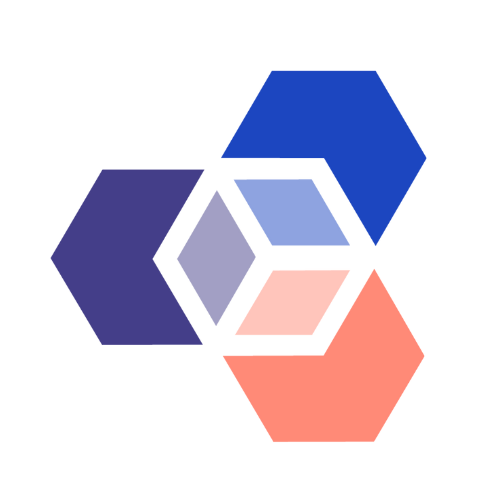Gerald Evans ~ Head of Learning Design; Emilou Hayden, Catriona Matthews, and Paul Astles ~ Learning Designers
In this post, we’re sharing some of the experiences of team members who have worked on external projects. As a team we periodically work with clients both inside and outside the OU to provide Learning Design specialist support. This has something of a virtuous circle effect as it provides benefits initially for the client and brings benefits back into the team through the learning we are able to do as part of the process and then into our day-to-day design work. And the day-to-day design work then in itself informs the offer we are able to provide to clients internally and externally to the OU. Hence completing the circle!
It’s interesting to reflect on the examples below. The first provides an insight to the benefit of reconnecting with face-to-face workshop activity after a significant period of working online. Much of our work post-pandemic has been online so this provided an opportunity to refresh the skillset and to think about what face to face workshops mean to groups and teams in our present-day mode of increased hybrid working.
The second provides a nice summary of the type of analysis we undertake when establishing how and whether we can help a client. It’s very easy to make assumptions before starting on a piece of work and the example below provides some insight into how this can be avoided. It also demonstrates how and why the role of a Learning Designer can add so much value and make a difference through their unique skillset combining facilitation expertise with in-depth knowledge and tools and techniques for developing high quality learning experiences.
~Gerald Evans
Emilou: Facilitating in-person after years of collaborating online
After years of working entirely online, I facilitated an in-person session at the beginning of 2023.
What was the session?
The Engagement and Partnerships team were planning a two-day workshop for a group of external companies. They were coming together for a research project and accompanying online course. We (at the OU) were helping with the online course bit. As a Learning Designer, I came along on the second day to support the group with embedding learning design principles into the course plan.
How did we plan the workshop? & How did the “in-person” element factor in?
A key focus for any session is to make it “worth it”. Worth the time and energy people have invested to be there. For this session this was even more important. People were flying in from out of the UK to be there. They had not been together as a group in about a year. So, the question was, “what can be done more effectively in person”?
Prioritising things like group discussion, hands-on-working together, or even low-pressure bonding, or anything that is harder to do over email or Teams meeting, can help your group feel the time and effort was well spent.
For this group the key thing was working together quickly and easily. One of the breakout groups fed back that they gathered for a 5-minute discussion, that resolved a question that would have taken them weeks to conclude over emails and phone calls.
Collaboration was the focus of the second day. We wanted to spend as little time as possible talking at the group, but instead wanted everyone to talk with each other.
That informed the plan for the day. For the purposes of context setting and getting everyone on to the same page, there had to be some information delivered. However, the majority of the time was spent bringing ideas together as a group.
What did we cover on the day?
I facilitated 3 sections over the day:
-
-
- Who is your audience and what are the challenges when writing for them?
- Learning Outcomes – What should your audience get out of your course?
- Designing Effective Activities.
-
Each section followed the same format:
-
-
- The plan: What are we doing and why?
- Getting on the same page: Providing information about a Learning Design concept.
- The activity: A chance to apply the concept to their project, drawing on the group’s experience and ideas.
- Get it on the board: Share outputs and decisions from activities and discussions on to a Miro board for later reference.
-
This format worked well to hit a balance between providing information about learning design in general, while allowing for the sharing of ideas and making real progress with the group’s course planning.
By the end of the session the group had considered their audience, their needs, and how the course would meet those needs.
A learning point I took away was, when working with groups – especially ones that usually connect remotely – to really value the opportunity to come together and discuss ideas in an easy and supported way. If I were to run it again, I would consider building in some more unstructured time to allow the individuals in the group the freedom to have micro discussions of their own choosing.
Paul and Catriona: How do we plan our external training and workshops delivery?
When planning a session, it is important to consider what your audience will get from it and whether the session outcomes link up with their expectations. This might sound like an obvious thing to say but achieving this takes a deliberate process of thought and partnership with your intended audience.
We will explore the steps we took to ensure that expectations and outcomes were aligned when planning for a recently delivered training session. The training in question was run as part of our ‘External working group’. This group is comprised of Learning Design colleagues who work with teams/organisations external to the Open University. The purpose of this work is often quite bespoke in nature.
How do we start to plan for this sort of work?
Once you have an idea of the broad focus of the session you’re going to run, but before you put pen to paper (or however you prefer to plan), begin by getting a clear understanding of the group’s needs. We have a process of scoping requirements. It is not a mysterious telepathic process; we develop a working relationship by discussing the needs, requirements, and expectations that a group has.
We take the opportunity to ask lots of questions at this stage to ensure that we can plan a meaningful experience for those coming to the session(s).
They fall into 3 broad categories:
Admin and set up:
-
-
- Tech set up: Screens/Display, Technology for hybrid meeting present and what that will look like?
- How long is the session?
- Are the online participants working with or separately from the in-person participants?
- Who is invited to the session. Are they all in the same team or on the same project?
-
Current practices
-
-
- Do you currently use any frameworks or design approaches?
- Do you have any examples of your courses?
-
Session specifics
-
-
- Do you have specific design activities or session(s) that you want us to target in the training?
- What would a successful session look like for you?
-
These then help us to narrow down the scope of the of training. It leads to more specific questions about content and examples of types of content that currently exist within the external groups processes which helps us to make connections between a group’s practice and the focus of the session.
For example, we used a group’s existing guidance about the creation of learning outcomes to draw connections between their practice, OU practice and academic frameworks. This helped the development of the groups knowledge base as they could link the activities and new information to their existing foundation of knowledge.
Planning the structure of a session:
We used a collaborative online whiteboard to help plan each element of the training. Then we created a visual session plan, very similar to a storyboard, which helped us to visualise the experience of the audience and check the alignment of our content and activities to the expectations outlined in the scoping conversation. This covered everything from ‘pre-session’ preparation, like the resources we would need to take with us, through to the timing and content of each activity during the day. Much like when we support the design of courses, we try to visualise the journey of our participants through the session to create a coherent narrative and positive learning experience.
Capturing outputs:
The final stage of planning is to decide how we want to capture outputs on the day to be able to share these back to the group after the session. During training sessions so many ideas get thrown around that it can be easy to leave feeling a little overwhelmed. When the buzz of the session has worn off, picking out the key takeaways from your scrawled notes can be a challenge.
To make this easier for our participants we plan in ways to capture the outputs of activities which we can, if the session is in person, gather up, take photos of and disseminate. The practicalities of this involve converting the information into whatever format makes most sense for the audience. For this particular session, we shared the photographs directly back to the group on their own virtual whiteboard. Alongside this, we curated the key takeaways from each section of the session and their outputs on to a PowerPoint document to share back to them.
It’s important to consider ‘outputs’ and what to do with them as a result of a session. We found that creating a plan ahead of the session about what to do with them helped us to ensure that we could support a consolidation of the key takeaways for the participants. It also provided an opportunity for a final check in and opportunity to ask any burning questions leftover from the session.
If you’d like to talk with the Learning Design team at The Open University about any design support you’d find useful for your organisation, whether that’s running a session for you, helping you to use some of the resources we’ve shared via this blog, or simply for a bit of advice, please contact us at: LDS-LearningDesign@open.ac.uk
Banner image: Pexels / Nubia Navarro (nubikini)

